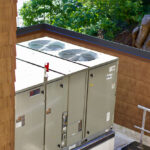Welcome to our discussion about creating a comfortable workplace environment. Today, we will delve into the three main elements that significantly impact workplace comfort: lighting, temperature, and noise control. Understanding and optimizing these critical factors can create a more productive and pleasant workplace for everyone involved.
The Importance of a Comfortable Workplace
The significance of a comfortable workplace cannot be overstated. Working conditions significantly influence overall organizational outcomes, from enhancing productivity to boosting employee morale. Moreover, a well-regulated environment can foster employee health and wellbeing, reducing workplace stress and burnout.
Role of Lighting in Creating a Comfortable Workplace
Lighting plays a pivotal role in the workplace. Optimal lighting reduces strain on the eyes and can significantly increase productivity. Natural light is always a top choice, but in its absence, we should aim for balanced, well-diffused artificial lighting. A blend of general and task lighting, adjustable lights, and light filters can further improve the workspace and cater to individual needs. Consider, for instance, how a design firm can revamp its workspace with enhanced lighting and see a dramatic increase in employee satisfaction and productivity.
Role of Temperature in Creating a Comfortable Workplace
Let’s turn up the heat – or focus on controlling it. HVAC systems play a pivotal role in maintaining an ideal temperature at the workplace. Extreme hot and cold temperatures can drastically impact work efficiency, often leading to discomfort and decreased productivity.
Most studies suggest an optimal temperature range for workplaces to be between 68-77°F (20-25°C). It’s vital, however, to allow for some individual adjustment, as comfort levels can vary from person to person. Smart thermostats and zoning can maintain a comfortable ambient temperature, while personal heaters or fans can provide additional individual control.
HVAC systems’ upkeep and maintenance are equally critical – a well-maintained system ensures efficient temperature regulation and energy consumption. For example, a tech company that recently upgraded its HVAC system could improve employee comfort, reduce energy costs, and enhance productivity.
Role of Noise Control in Creating a Comfortable Workplace
Noise levels significantly impact concentration and productivity. While complete silence in a workspace is often unachievable (and not necessarily desirable), minimizing noise pollution is crucial. Employing soundproofing materials, investing in white noise machines, or even providing noise-canceling headphones can create a more focused and less disruptive environment.
For example, by implementing noise control measures, a busy call center could see a marked decrease in employee stress levels and increased customer satisfaction scores.
Integrating Lighting, Temperature, and Noise Control for a Comfortable Workplace
Creating a comfortable workspace doesn’t mean focusing on these elements individually. Instead, it requires a holistic approach considering the interconnectedness of lighting, temperature, and noise control. For example, brighter lighting may call for adjusting the temperature slightly downward to balance the increased heat. Similarly, a quieter HVAC system can improve noise control without compromising temperature comfort. Therefore, a balanced strategy is essential for achieving maximum comfort and productivity.
Practical Tips and Best Practices
Implementing the right lighting, temperature, and noise control balance might seem daunting, but it can be a smooth transition with the right strategies. Here are some practical tips:
- Conduct regular HVAC maintenance to ensure optimal temperature control. Consider installing smart thermostats that allow precise control and energy saving. In the case of larger workplaces, zoning can ensure different areas are heated or cooled based on use and occupancy.
- Improve lighting with a combination of natural light and artificial sources. Use diffusers for artificial lights to avoid glare and harsh shadows. Also, adjustable lights allow employees to control light levels comfortably.
- For noise control, use sound-absorbing materials in the office decor. You can also designate quiet zones for focused work and collaborative zones where noise is more acceptable. Noise-canceling headphones can be provided for employees who prefer working in a more peaceful environment.
Remember, changes for improved comfort should be gradual and continuous to allow employees to adjust and provide feedback.
Conclusion
Creating a comfortable workplace is not a one-time task but a constant endeavor. Focusing on lighting, temperature, and noise control can significantly improve your work environment, increasing productivity, employee morale, and overall wellbeing. The investment in creating a comfortable workspace is always returned multi-fold in the form of happier, healthier, and more productive employees.
Let’s strive towards making our workplaces the best they can be, one light bulb, one thermostat, and one decibel at a time.
—
This blog post has provided insights and practical tips on creating a comfortable workplace by focusing on lighting, temperature, and noise control. Remember that your employees are your most valuable asset; a comfortable workspace can bring out their best potential.






0 Comments